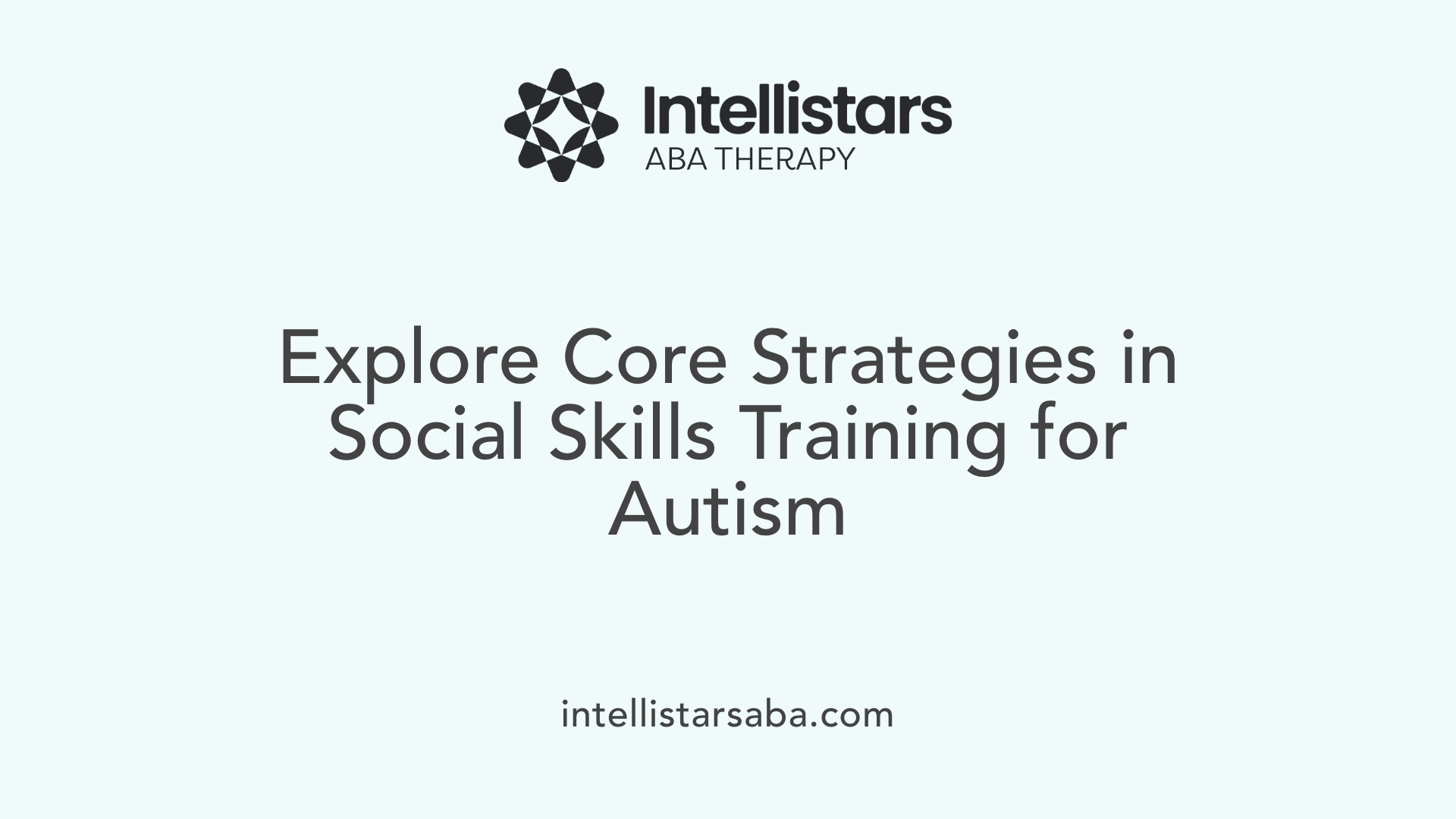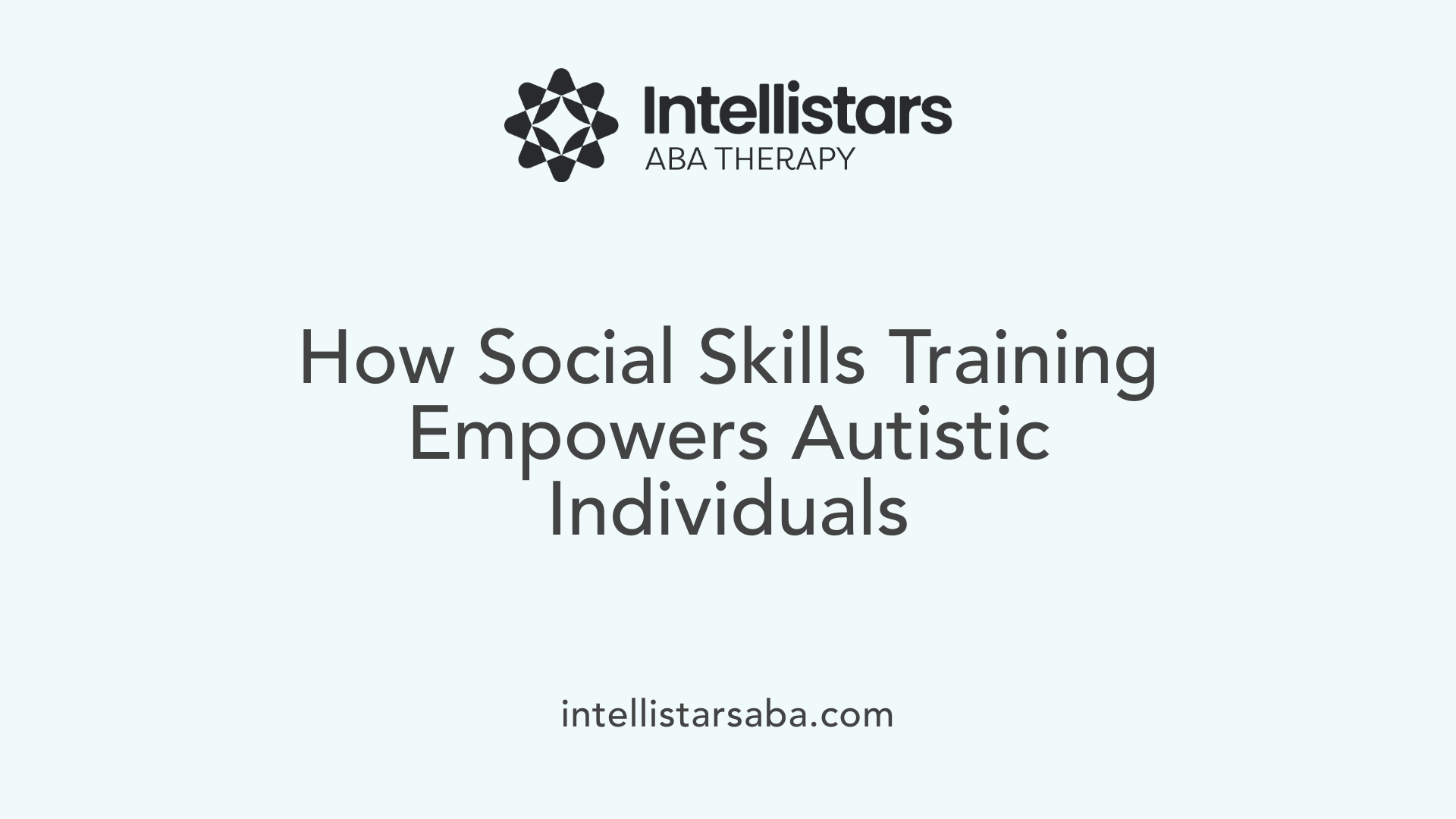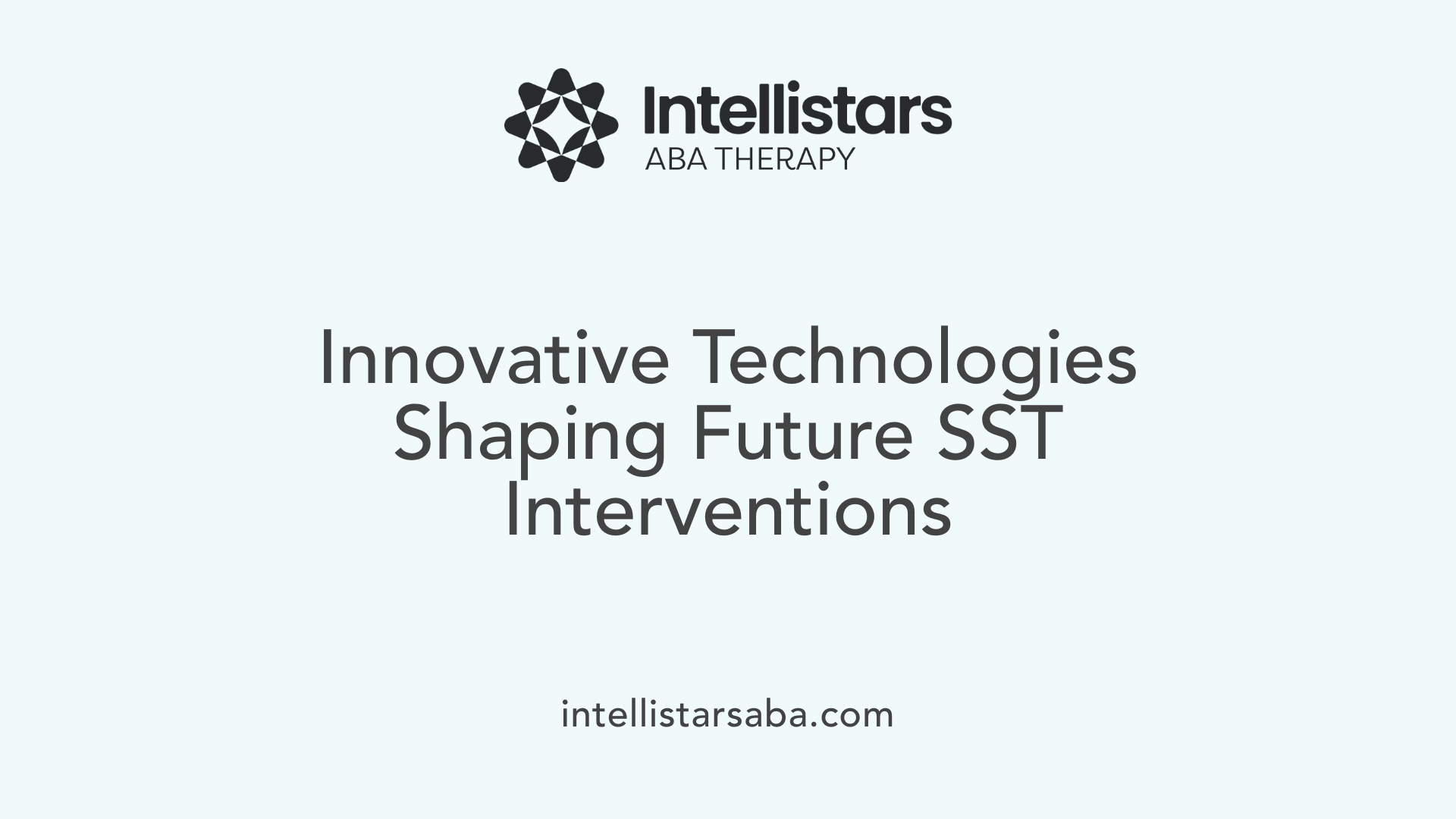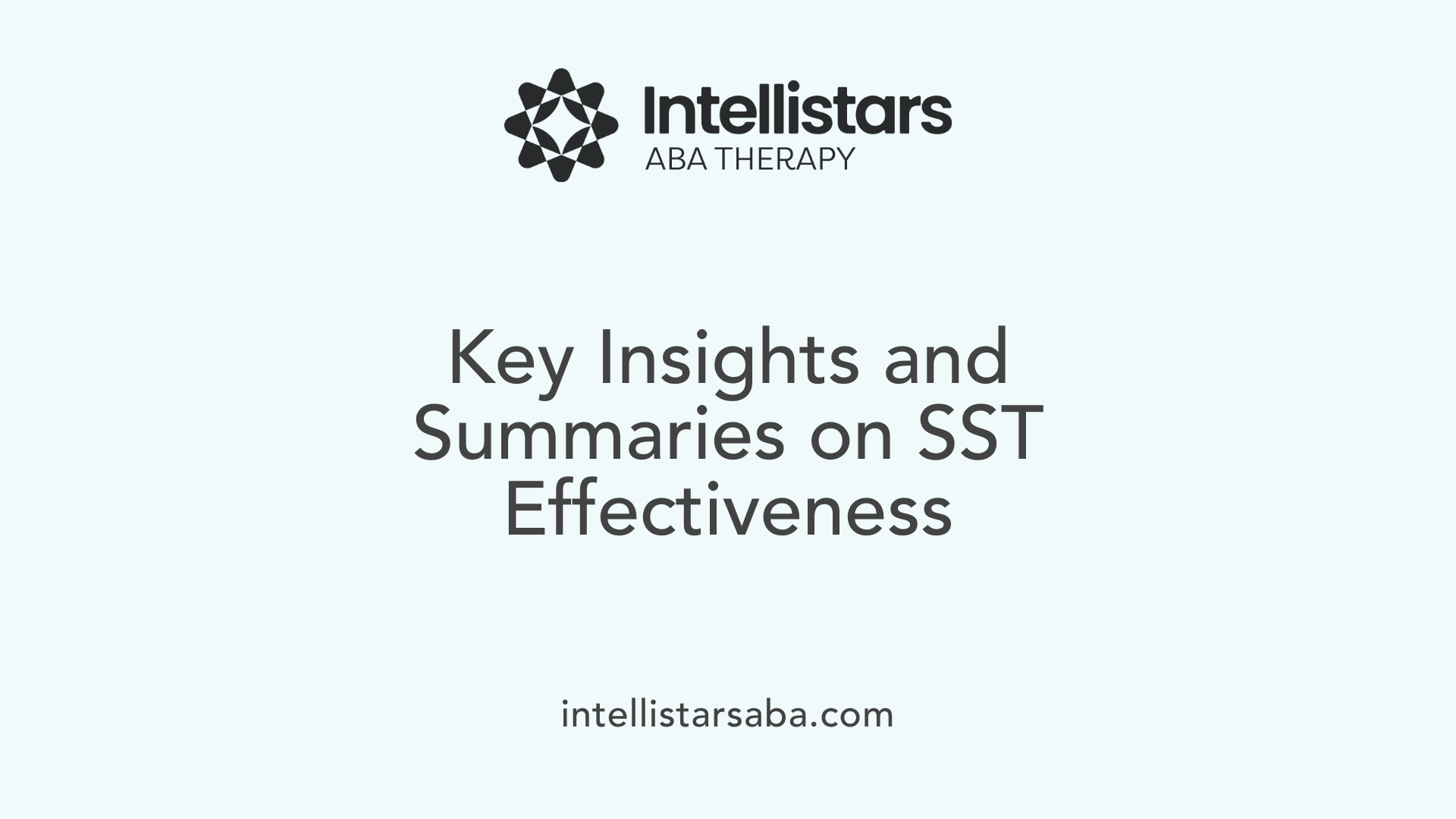Understanding the Role of Social Skills Training in Autism
Social Skills Training (SST) is a targeted, evidence-based intervention designed to improve interpersonal and social interaction skills among individuals with autism spectrum disorder (ASD). As social skills are fundamental to meaningful relationships, community participation, and overall quality of life, SST offers a structured approach to teaching these essential abilities.
Defining Social Skills Training (SST) for Autism
What is SST?
Social Skills Training (SST) is a structured approach aimed at helping individuals on the autism spectrum develop essential interpersonal skills. It involves direct teaching of social behaviors such as initiating conversations, sharing, understanding social cues, and managing emotions. SST is often delivered in both group settings and one-on-one sessions, making it adaptable to various learning environments like schools, clinics, and homes.
Recognized as an evidence-based method, SST plays a vital role in improving social confidence and peer relationships for children and adults with autism. By practicing these skills actively, individuals can better navigate everyday social interactions, leading to increased participation and happiness.
Overview of SST techniques and methods
SST incorporates a variety of instructional strategies to teach social skills effectively. These include explicit instruction through demonstrations, role-playing scenarios, and providing immediate corrective feedback. Teachers and therapists also use reinforcement techniques to motivate learners and assign homework to practice skills outside sessions.
Innovative methods such as social stories, video modeling, and peer-mediated intervention enhance engagement and understanding. For example, social stories use visual narratives to teach appropriate social responses, while video modeling shows desired behaviors for imitation.
In recent years, technology-based SST methods like computer programs, avatars, and therapeutic robots have gained popularity. Meta-analyses indicate both traditional face-to-face interventions and these digital approaches are effective, with similar levels of success in improving social skills.
How SST is tailored for individuals with autism
Personalization is key in SST applications. Interventions are adapted according to the individual's age, cognitive level, social deficits, and personal interests. Program components, such as specific social goals and activities, are customized to meet unique needs.
For younger children, skill-building might focus on basic social behaviors like sharing and turn-taking. Adolescents and adults may learn more complex skills such as workplace communication and maintaining friendships.
Inclusion of real-world practice is crucial, with activities designed to promote generalization across different settings. Trainers also consider sensory sensitivities and communication preferences, incorporating augmentative and alternative communication methods when necessary.
Overall, SST's flexibility and evidence support its use as part of a comprehensive treatment plan for autism, helping individuals develop practical social skills that improve their overall quality of life.
| Practice Area | Techniques Used | Target Audience | Typical Settings |
|---|---|---|---|
| Social Skill Development | Role-playing, social stories, video modeling | Children, Adolescents, Adults | Schools, Clinics, Community centers |
| Digital Interventions | Computer programs, avatars, robots | Tech-savvy users | Online, home, therapy centers |
| Peer-Mediated | Peer modeling, group activities | School-aged children | Schools, social groups |
Core Methods and Techniques in SST for Autism

What are the main methods and techniques used in social skills training for autism?
Social Skills Training (SST) for autism incorporates various instructional methods and techniques tailored to improve social communication and interaction. A fundamental approach is role-playing, where individuals practice real-life social scenarios, gaining confidence and understanding appropriate responses.
Modeling is another essential method, often using social stories or videos to demonstrate positive social behaviors. Social stories provide visual narratives illustrating how to navigate specific social situations, helping individuals learn contextual cues and expected responses.
Peer-mediated strategies are also widely used, involving peers or trained tutors to model social interactions and facilitate naturalistic learning. This approach promotes the generalization of skills outside structured sessions, crucial for real-world application.
Naturalistic teaching techniques adapt instruction to everyday settings, embedding social skill practice within routine activities like classroom interactions or community outings.
Behavioral reinforcement and feedback are integral to SST. Positive reinforcement encourages desired behaviors, while corrective feedback guides individuals toward better social responses.
Other techniques include direct instruction on social rules, conversational turn-taking, and making appropriate eye contact. Homework or outside practice assignments further reinforce skills learned during therapy.
SST sessions can be delivered either one-on-one or in groups by professionals like teachers, behavior analysts, or therapists. The intervention is personalized to target specific needs such as developing assertiveness, empathy, or problem-solving skills.
When combined with behavioral therapies like cognitive-behavioral therapy or peer interventions, SST becomes a comprehensive strategy to enhance social abilities. Its structured, evidence-based approaches make it effective in helping individuals with autism navigate social environments more successfully.
Understanding How SST Supports Autistic Individuals

Addressing social deficits in autism
Social Skills Training (SST) serves as a foundation for helping individuals on the autism spectrum overcome social challenges. Many children and adults with autism face difficulties in understanding and engaging in typical social interactions, which can impact friendships, school success, and employment. SST programs focus on teaching essential skills such as initiating conversations, reading social cues, understanding emotions, and forming relationships. These skills are often taught through direct instruction, role-playing, and real-world practice, aiming to fill social gaps that often hinder meaningful interactions.
Importance of personalized and consistent practice
A crucial aspect of effective SST is tailoring instruction to each individual's needs. Because autism manifests differently in each person, personalized approaches ensure that training addresses specific challenges and reinforces strengths. Consistent practice across various settings—home, school, or community—helps solidify skills learned during sessions. Using tools like visual aids, social stories, and homework assignments, professionals and families can support ongoing mastery of social behaviors. Repetitive and structured practice fosters confidence and helps integrate these skills into everyday life.
Generalization of skills to real-world contexts
One of the most significant hurdles in social skills training is ensuring that learned behaviors transfer from therapy sessions to real-world situations. Successful generalization means that individuals can apply their new skills in diverse social environments, such as playgrounds, classrooms, workplaces, and community events. To achieve this, SST programs incorporate activity-based scenarios and encourage practice in naturalistic settings. Peer-mediated interventions and community involvement programs bolster this transfer, allowing individuals to navigate social interactions with greater independence.
| Aspect | Approach | Impact |
|---|---|---|
| Social deficits in autism | Tailored social skills instruction | Improved peer relationships, social understanding |
| Practice | Repeated, environment-specific practice with feedback | Increased confidence, better application of skills |
| Real-world application | Use of naturalistic teaching and community engagement | Enhanced independence, broader social participation |
Social skills training remains an essential part of a comprehensive support plan for individuals with autism. By combining personalized instruction, consistent practice, and real-world application, SST helps bridge social gaps and promote meaningful community involvement, ultimately improving quality of life.
Scientific Evidence Supporting SST Effectiveness
What is the evidence supporting the effectiveness of social skills training for individuals with autism?
Research consistently shows that social skills training (SST) can significantly improve social communication, reduce social difficulties, and help individuals with autism better adapt socially. These improvements are most notable when interventions are structured, personalized, and include real-world practice.
A comprehensive review of studies from 2000 to 2023, including 17 research articles, used meta-analytic methods to evaluate SST’s effectiveness. The findings indicate that both traditional face-to-face (F2F) approaches and newer behavioral intervention technologies (BITs)—such as computer programs, virtual avatars, and therapeutic robots—are effective.
The reported effect sizes are promising, with F2F interventions showing an average effect size of g=0.81, and BITs interventions having an even slightly higher effect size of g=0.93. These measures reflect a medium to high impact, demonstrating notable improvements in various social skills including conversation initiation, understanding social cues, facial expressions, and reciprocity.
Both approaches outperform control groups significantly, meaning they have a meaningful impact on social functioning. Importantly, the research found no significant difference in the effectiveness between face-to-face sessions and technology-based methods, suggesting digital tools can serve as effective, accessible alternatives or supplements.
The evidence underscores that SST is a valuable part of holistic autism treatment plans, capable of fostering better peer relationships and communication skills. It also highlights the potential of digital interventions to expand access to quality social skills training, especially during times like the COVID-19 pandemic or for families with limited local resources.
Emerging Technologies in SST for Autism

Are there emerging technological approaches to enhance social skills training for autism?
Yes, recent innovations are transforming how social skills training (SST) is delivered to individuals with autism. Advances in virtual reality, computer applications, and robotic technology have opened new pathways for engaging, personalized, and accessible interventions.
Virtual reality (VR) and computer-based programs create immersive environments where learners can practice social interactions safely. These platforms simulate real-world settings, helping individuals recognize social cues, manage emotional responses, and build conversational skills through repeated practice. This controlled setting not only enhances learning but also reduces anxiety associated with face-to-face interactions.
Alongside VR, avatar-based interventions and therapeutic robots have gained popularity. These digital and robotic agents serve as friendly, non-judgmental social partners, effective in teaching social behaviors such as greeting, turn-taking, and emotional recognition. For example, robotic companions can motivate users to participate actively and learn social rules in a more engaging manner.
Digital solutions such as mobile applications and online programs broaden access to SST, especially during situations like the COVID-19 pandemic, when in-person therapy options may be limited. These tools allow for tailored lessons that can be used at home or in community settings, ensuring ongoing development and generalization of social skills.
Research indicates that these technology-based approaches have medium to high effectiveness. Meta-analysis of various trials shows comparable results between traditional face-to-face methods and digital interventions, with effect sizes indicating meaningful improvements in social functioning.
Overall, the integration of emerging technologies into social skills training offers a promising avenue for expanding reach, increasing engagement, and personalizing learning experiences for people with autism. As research advances, these tools are likely to become central components in comprehensive, adaptive intervention strategies.
Implementing SST in Various Settings and Populations

How is social skills training implemented across different settings for individuals with autism?
Social Skills Training (SST) is adaptable and can be administered in various environments to meet the diverse needs of individuals on the autism spectrum. In schools, SST often involves embedding social activities into the classroom routine. Teachers utilize peer-mediated instruction, where classmates help model and reinforce appropriate social behaviors. They also incorporate social stories and visual supports to clarify expectations and promote understanding.
In clinical settings, professionals such as behavior analysts, speech therapists, or occupational therapists deliver targeted interventions. These interventions include direct instruction, role-playing, and naturalistic teaching strategies which allow children to practice skills like initiating conversations, understanding social cues, and sharing.
Community programs extend training beyond structured environments through social groups, recreational outings, and peer interaction activities. These experiences help children generalize learned skills to real-world scenarios, fostering independence and community integration.
The implementation strategies are tailored to individual needs, considering age, developmental level, and severity of autism symptoms. For younger children, focus might be on fundamental skills such as turn-taking or eye contact, while adolescents may work on complex social interactions like handling conflicts or participating in group discussions.
Effective SST programs often combine multiple approaches, including visual supports, behavioral reinforcement, and involvement of families to reinforce skills across settings. This multimodal approach ensures consistency and supports the broader goal of improving social competence across personal, educational, and community spheres.
Future Directions and Resources for SST in Autism
To enhance the implementation of Social Skills Training (SST), a variety of educational resources are now available for both parents and professionals. These include comprehensive guides, manuals, and evidence-based resources from reputable organizations like the National Professional Development Center on Autism Spectrum Disorders. Such materials offer step-by-step instructions, checklists, and tools for effective delivery of SST tailored to different age groups and needs.
Online courses and downloadable resources are also popular, providing flexible access to training strategies like peer-mediated instruction, social stories, video modeling, and specialized programs such as UCLA’s PEERS. These digital tools make it easier for caregivers and educators to learn and practice techniques that promote social understanding and interaction.
Supporting neurodiversity is an important focus for future SST development. This involves promoting awareness, acceptance, and understanding of different communication and social styles. Resources now emphasize alternative methods of communication, like augmentative and alternative communication systems, to include individuals with diverse needs.
These evolving tools and approaches aim to create inclusive environments where all individuals can develop social skills suited to their unique contexts. Continued research and resource development are crucial for refining SST practices, ensuring they are accessible, effective, and respectful of individual differences.
Summary and Key Takeaways

How does SST impact social participation and quality of life for individuals with autism?
Social Skills Training (SST) plays a crucial role in helping individuals with autism better participate in social activities and build meaningful relationships. By teaching communication, emotional understanding, and social behaviors, SST enhances social confidence and peer interactions.
Improved social skills not only foster friendships but also support integration into community life and educational settings. These skills contribute to increased happiness, independence, and overall quality of life.
Why is personalized and consistent practice important in SST?
Each person with autism has unique needs and social challenges. Personalized SST programs tailor instruction and activities to individual strengths and difficulties. This customization helps maximize learning and generalization of skills.
Consistent practice across different environments—home, school, and community—is vital. Repeated exposure and reinforcement enable individuals to apply learned skills in real-world situations, making social interactions more natural and less stressful.
How should SST be integrated with other therapies and early intervention?
SST is most effective when part of a comprehensive, early treatment approach. Combining social skills training with other therapies such as behavioral interventions, speech therapy, and occupational therapy creates a well-rounded support system.
Early intervention allows children to learn social skills during critical developmental periods, promoting better outcomes. Strengthening social abilities early on can prevent social withdrawal and improve adaptive functioning over time.
What is the evidence supporting the effectiveness of social skills training for individuals with autism?
Research across numerous studies supports the positive impact of SST. A recent systematic review and meta-analysis of 17 studies from 2000-2023 found that SST yields small to moderate improvements in social skills, with overall effect sizes ranging from 0.28 to 0.60.
Both face-to-face (F2F) and behavioral intervention technologies (BITs), including computer programs, avatars, and robots, have demonstrated effectiveness. Effect sizes were g=0.81 for F2F and g=0.93 for BITs, indicating that both methods significantly enhance social communication, reciprocity, and joint attention.
Importantly, no significant difference was observed between traditional and technology-assisted interventions, highlighting the growing role of digital tools in expanding access and engagement.
| Aspect of SST | Effectiveness | Delivery Method | Additional Notes |
|---|---|---|---|
| Face-to-face | g=0.81 | In-person instruction | Traditional approach |
| Technology-based | g=0.93 | Computer programs, avatars, robots | Growing accessibility |
| Overall | Small to moderate effect | Both methods | Effective for core social skills |
These findings underscore that SST is a valuable, adaptable tool for improving social functioning in people with autism, supporting both clinical practice and ongoing research.
Empowering Social Growth in Autism
Social Skills Training (SST) remains a cornerstone of autism intervention, combining evidence-based strategies with innovative technological approaches to meet diverse needs. Its implementation across various environments—be it schools, clinics, or community settings—facilitates meaningful improvements in social participation, peer relationships, and overall quality of life. Future advancements promise even more accessible, engaging, and personalized tools, reinforcing SST's vital role in fostering social competence for individuals on the autism spectrum.
References
- [PDF] Social Skills Training (SST) - ---EBP Brief Packet - ERIC
- Social Skills Training for Autism Spectrum Disorder: a Meta-analysis ...
- Social Skills Training (SST) - Overview
- A Comprehensive Guide to Social Skills Training - Autism Treatment
- Social Skills Training: Definition, Uses, and Tips - Verywell Mind
- Social Skills Training (SST). EBP Brief Packet - ERIC
- What is Social Skills Training (SST) and When is it Used?
- Effectiveness of social skills training interventions for children with ...
- Social skills and autism | Autism Speaks






